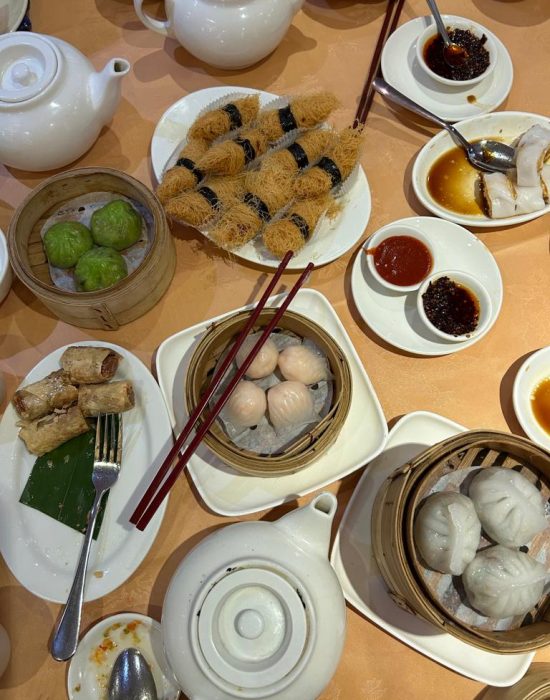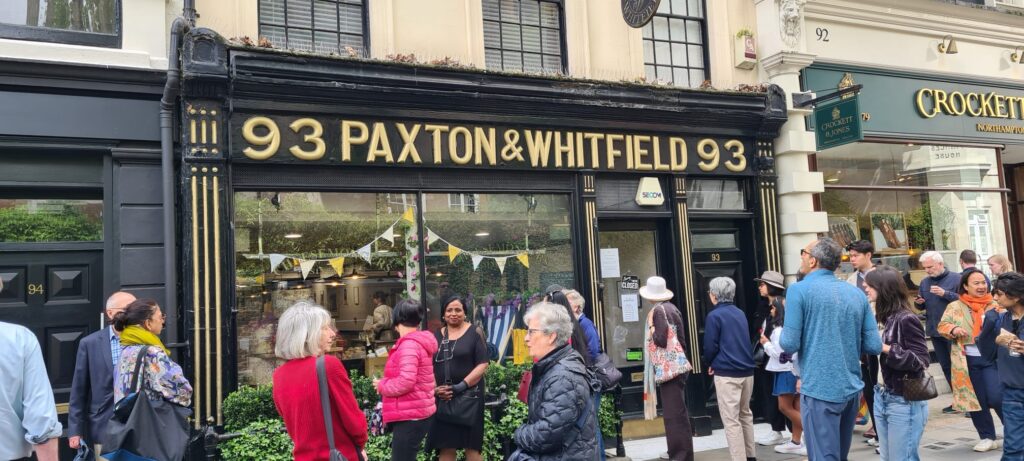Foodie Walk to Well-being: A Stroll Down Gastronomic Traditions
In our rapidly modernising world, eating habits have drastically changed. Today, the emphasis often leans towards dieting and food restrictions, rather than savouring the joy of eating and appreciating the rich heritage behind each bite.
Our journey started with the grandeur of the Ritz, famous for its High Tea. The practice of Afternoon Tea, despite its humble beginnings in the 1840s as a way to ward off hunger pangs between meals, has evolved into a much-celebrated tradition today. Legend has it that the Duchess of Bedford, Anna Russell, requested tea and sandwiches as a light snack, and that’s what led to the creation of the Afternoon Tea ceremony. This grand event featured finger sandwiches, scones, cakes, and pastries, accompanied by tea and, often, a glass of Champagne. This ceremony was a perfect reminder of how food is a celebration, a social event that brings us together to share stories and laughter over delightful bites.
Next, our route took us to the exquisite world of Caviar House & Prunier. And then The Wolseley, an old car showroom turned bank and now a famous restaurant, gave us a taste of the transformative power of spaces and their link to our culinary experiences. And walking down St. James’s Street felt like stepping back in time. White’s, the oldest gentlemen’s club, served traditional steak, echoing their allegiance to meat, tradition, and exclusivity. This street, once dotted with ‘gentlemen’s clubs’, stood as a testament to the gastronomic cultures of the past.
Our journey then took us to the Fortnum and Mason department store, an establishment with a fascinating backstory: It was started by Fortnum, a palace footman, selling used candles from St. James’s Palace and gradually morphed into a food store. Today, it is arguably the world’s most famous food store, and it once also served as the crucial link between armies and nourishment during times of war.


Our journey started with the grandeur of the Ritz, famous for its High Tea. The practice of Afternoon Tea, despite its humble beginnings in the 1840s as a way to ward off hunger pangs between meals, has evolved into a much-celebrated tradition today. Legend has it that the Duchess of Bedford, Anna Russell, requested tea and sandwiches as a light snack, and that’s what led to the creation of the Afternoon Tea ceremony. This grand event featured finger sandwiches, scones, cakes, and pastries, accompanied by tea and, often, a glass of Champagne. This ceremony was a perfect reminder of how food is a celebration, a social event that brings us together to share stories and laughter over delightful bites.
Next, our route took us to the exquisite world of Caviar House & Prunier. And then The Wolseley, an old car showroom turned bank and now a famous restaurant, gave us a taste of the transformative power of spaces and their link to our culinary experiences. And walking down St. James’s Street felt like stepping back in time. White’s, the oldest gentlemen’s club, served traditional steak, echoing their allegiance to meat, tradition, and exclusivity. This street, once dotted with ‘gentlemen’s clubs’, stood as a testament to the gastronomic cultures of the past.
Our journey then took us to the Fortnum and Mason department store, an establishment with a fascinating backstory: It was started by Fortnum, a palace footman, selling used candles from St. James’s Palace and gradually morphed into a food store. Today, it is arguably the world’s most famous food store, and it once also served as the crucial link between armies and nourishment during times of war.
We also explored Jermyn Street, home to Paxton & Whitfield Ltd, London’s oldest cheese shop. Here we learnt about Wall’s, which had started as a sausage shop and later became a popular ice cream outlet.

In Soho, we visited Gerry’s Wines and Spirits, the go-to store for rare alcohols from around the world, and the Algerian Coffee Stores, one of the oldest coffee stores. Each establishment was a celebration of taste, tradition, and tenacity.
A significant milestone in our journey was the inspiring story of the French chef, Alexis Soyer. Invited by the Queen to prepare a banquet for the UK’s poor, he had gained fame not only for his culinary skills but also for his invention, the portable Soyer stove. It was an emblematic example of food’s power to bridge societal gaps and foster unity.
Finally, the story of the Lyons’ Teacakes reminded us of the fascinating crossovers between different sectors. Beginning as a series of tea shops, they had ventured into the world of computers, showcasing the adaptability and versatility that food-related businesses can possess.
This enriching foodie walk served as a beautiful reminder of the intricate tapestry of culture, history, and tradition that shapes our eating habits. Food is much more than nutrients; it’s about stories, shared experiences, and comfort. From our first experience with food as babies to our instinctive reach for comfort food in distress, food is a vital part of our emotional fabric. Denying ourselves the joy of eating is like refusing to celebrate one of life’s simplest and truest pleasures. So, let’s embrace our meals, enjoy every bite, and try and recount our memories of dishes – after all, it’s often the stories that make eating one of life’s greatest joys.
What I discovered

In my continuous exploration of health and wellness, I stumbled upon an unexpected ally in the battle against weight loss – cupping. This ancient practice has reemerged from the archives of traditional medicine into the 21st century.
The quest for knowledge of health and wellness is a continuous journey, one filled with surprising discoveries like these. As we delve deeper into the nuanced realm of traditional practices and their relevance in modern times, we uncover unexpected allies like cupping therapy. This month, I bring to light some surprising benefits of cupping for weight loss, a hot topic in modern health discussions.
- Regulation of Lipid Metabolism: The human body is a complex machine with numerous processes running simultaneously. Lipid metabolism is one such process, often linked with obesity. A 2023 study has indicated that cupping therapy may regulate body metabolism. By targeting specific acupuncture points, cupping helps lower oxidative stress, thereby enhancing lipid metabolism and fostering weight loss.
- Appetite Regulation: Today’s fast-paced world often messes with our eating habits, leading to abnormal appetites. Here too, cupping steps in as an effective solution. It has the potential to interact with our nervous system, curbing the secretion of gastric acid. The result? A decrease in feelings of fatigue and hunger, supporting efforts towards weight loss. Furthermore, by slowing gastric emptying, cupping therapy ensures that you feel satiated for longer, reducing the need for unnecessary snacking.
- Endocrine System Regulation: Endocrine disorders are a common culprit behind obesity. Interestingly, cupping therapy, through its unique acu-point stimulation, can help regulate these systems. By accelerating fat metabolism, it facilitates weight loss while also fostering overall endocrine health. It’s a classic two-birds-one-stone situation.
The recent 2023 study I mentioned earlier has added a layer of validation to these claims. Researchers have considered cupping as a safe and effective complementary intervention for reducing body weight. In other words, this ancient practice, when paired with other weight loss and dietary methods, could have a significant impact on your health and wellness journey. So, here’s to embracing the old with the new, and to many more enlightening discoveries on our path to better health.

